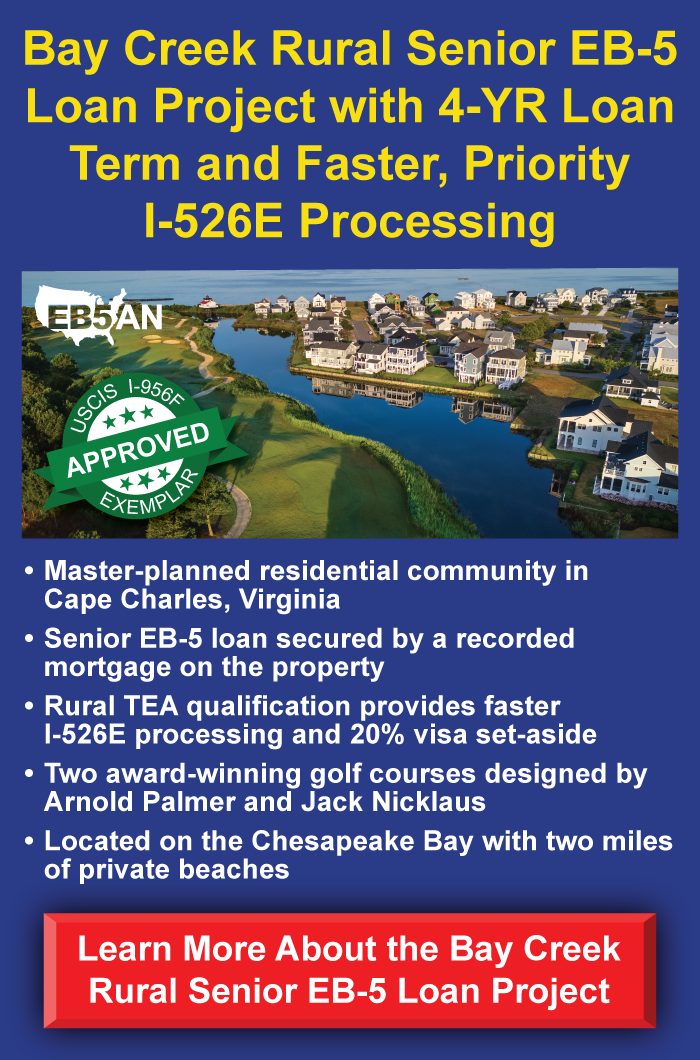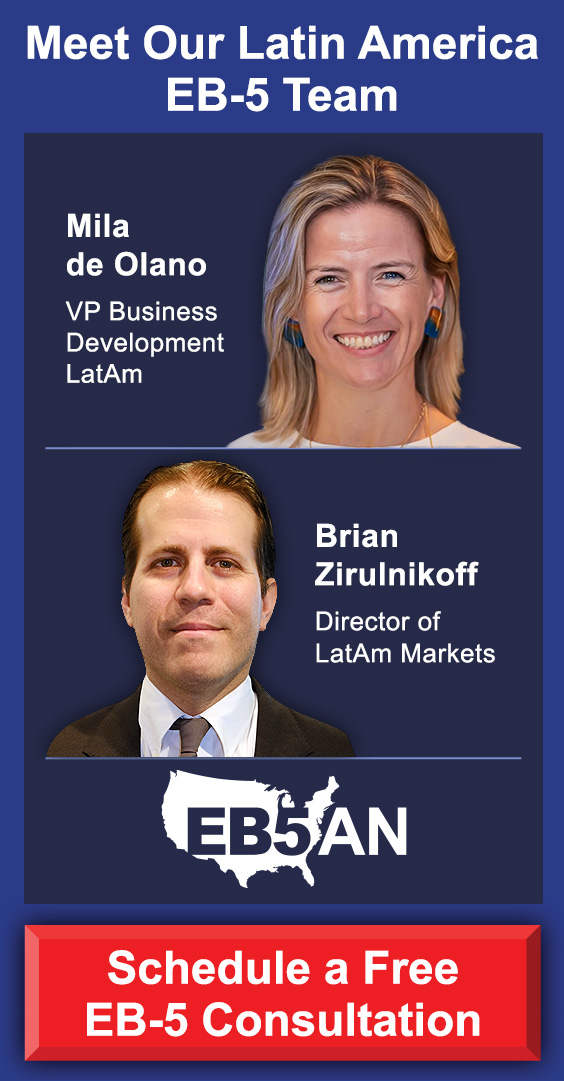The EB-5 Immigrant Investor Program offers foreign nationals a compelling opportunity: invest in a U.S. new commercial enterprise and gain permanent residency in the United States.
Beyond the program’s immigration requirements, EB-5 investing involves some financial commitment, risks, and complexities that investors must understand thoroughly in order to make fully informed decisions.
While EB-5 projects have unique aspects tied to immigration law and job creation requirements, the financial and operational fundamentals behind these real estate investments often mirror principles long established in private equity investing. Private equity firms have decades of experience structuring deals, motivating management, managing risk, and driving returns. These are insights that EB-5 investors can benefit from.
This guide breaks down these core private equity investment principles and explains how they apply directly to real estate projects within the EB-5 framework. By understanding these fundamentals, EB-5 investors can make more informed decisions, better protect their capital, and align their immigration and financial goals.
What Private Equity Principles Teach Us About Real Estate Investing
- Financial Incentives and Management Alignment
- Debt and Leverage
- Covenants
- Measurement, Reporting, and Governance
Applying These Principles to EB-5 Real Estate Investments
- Management & Leadership
- Ownership & Control
- Financial Basics, Cash Flow, Debt, and Exit Plans
- Exit & Repayment
Apply Private Equity Principles to Your EB-5 Investment
What Private Equity Principles Teach Us About Real Estate Investing
Private equity is an investment style where investors pool capital to acquire companies or assets, actively manage them, and seek to increase their value before eventually selling them for a profit.
Though EB-5 projects differ in some legal and operational ways, the financial mechanics and incentives driving their success are similar.
Here’s a straightforward summary of the key ideas driving how private equity investors think about leadership, incentives, debt, covenants, and governance.
Financial Incentives and Management Alignment
One of the fundamental lessons from private equity is the importance of aligning management’s incentives with those of investors. This alignment can take several forms—and often combines several approaches.
Firstly, financial rewards are powerful motivators. Private equity firms often give senior executives significant equity stakes or performance-based bonuses to ensure their goals align with the company’s success.
Secondly, compensation structures combine salary, bonuses, and equity. These elements motivate management not just to meet short-term targets but to drive long-term growth and value.
Thirdly, trust and transparency are essential. Senior executives tend to be skeptical of compensation negotiations; open, fair arrangements help secure their commitment.
Applying these principles to EB-5 means the developer or project operator’s financial incentives must be structured so their success directly benefits the project’s performance, timely completion, and job creation efforts.
Debt and Leverage
Private equity uses borrowing (leverage) to amplify returns.
Leverage allows firms to control a larger asset base with less equity. By borrowing, investors can multiply gains when the asset appreciates.
Debt, however, adds financial risk—higher debt levels increase the chance of distress if the cash flow falls short or market conditions worsen.
One solution to this issue is the debt covenant. By restricting borrowing or requiring financial benchmarks, such covenants protect lenders, as they limit risk by preventing reckless behavior or triggering remedies if problems arise.
For EB-5 investors, understanding the project’s debt structure and safeguards is crucial because excessive leverage or lax covenants can jeopardize both their chances of achieving a Green Card and of having their funds returned to them.
Covenants
Covenants are agreements embedded in contracts to manage risk and align incentives. As intimated by the discussion around debt covenants above, covenants limit risky behavior, mandate reporting, and set consequences for breaches.
Put simply, covenants establish early warning systems that alert investors to potential issues like missed milestones or financial stress. Clear, enforceable covenants foster transparency
For EB-5 projects, covenants can ensure job creation milestones are met and that investors’ capital is protected.
Measurement, Reporting, and Governance
In private equity, accurate measurement and transparent reporting are essential for maintaining trust and managing performance.
Good governance structures ensure that 1) boards and committees oversee management actions, 2) employment agreements lock in compensation and performance expectations, and 3) regular updates inform investors about financial results, risks, and project progress.
EB-5 investors need similarly robust reporting and governance to track job creation and compliance, both of which are key for immigration success.
Applying These Principles to EB-5 Real Estate Investments
Understanding these private equity lessons provides a strong foundation. Now let’s see how they specifically apply to the realities of EB-5 real estate investing.
Management & Leadership
Just like in private equity, the quality and integrity of the developer or project team is often the biggest factor determining success in EB-5 projects. Here’s what investors need to consider:
- Experience matters. Has the developer successfully delivered similar projects before? Do they have a track record of managing budgets, schedules, and financing effectively?
- Incentives must be aligned. Developers should have meaningful “skin in the game” tied to completing the project on time, on budget, and meeting job creation targets.
- Transparency and communication are vital. Investors must receive timely, accurate updates on progress and challenges.
- Reputation and governance matter. Developers with clean legal histories, transparent ownership structures, and sound corporate governance practices reduce risks for investors.
In sum, inadequate leadership can lead to delays, cost overruns, or a failure to meet the strict EB-5 job creation requirements, risking both financial losses and immigration outcomes.
Ownership & Control
EB-5 investors typically invest as limited partners with limited control over daily operations, but clear ownership and governance structures still matter deeply. Investors should look for projects that meet the following standards:
- Investor rights must be spelled out clearly in agreements. These should cover reporting obligations and protections against dilution or mismanagement.
- Regular reporting should cover financials, project milestones, and job creation metrics.
- Clear exit provisions ensure investors know how and when investors can get their capital back after the project matures.
Private equity teaches that when governance is weak or opaque, risks increase dramatically. EB-5 investors should insist on transparency to mitigate these risks.
Financial Basics, Cash Flow, Debt, and Exit Plans
The financial mechanics behind real estate projects can make or break investment outcomes. Here are some of the specific details investors should take into account:
- Cash flow is the lifeblood of a real estate project. Sustainable projects generate positive cash flow from rental income or operations to cover costs and debt service.
- Debt levels must be manageable. While leverage can boost returns, too much debt increases the risk of default, especially if market conditions deteriorate.
- As discussed above, debt covenants protect investors by setting borrowing limits and financial benchmarks.
- Exit strategies must be clear. Whether through sale, refinancing, or recapitalization, knowing how and when the investment will be realized is critical. For EB-5 investors, exit plans should align with immigration timelines, helping ensure capital is returned when visa requirements are met.
Understanding these financial fundamentals allows investors to separate sound projects from risky propositions.
Exit & Repayment
Ultimately, real estate investment returns depend on three main factors:
- Market appreciation: Rising property values and rental income boost returns, while any kind of economic or market downturn can have the opposite effect.
- Operational efficiency: Good management reduces costs, improves occupancy, and increases net operating income.
- Timing the exit: Selling or refinancing at the right moment maximizes returns. Some projects, particularly real estate developments, may use a phased approach—building and selling a certain number of units before building more—to ensure that the project does not rely on a single sale or completion date.
While EB-5 investors may prioritize immigration outcomes over returns, strong financial fundamentals increase the likelihood of successful capital repayment after conditions are met—and a financially strong project similarly increases the likelihood of creating the number of jobs needed to secure a Green Card.
Apply Private Equity Principles to Your EB-5 Investment
The EB-5 program offers a pathway to U.S. residency but demands careful financial due diligence. EB-5 investors can better safeguard their capital and immigration goals by applying time-tested private equity principles.
Specifically, EB-5 investors should 1) insist on the project having strong, incentivized leadership; 2) demand transparent ownership and governance; 3) understand the financial underpinnings of the project’s cash flow, debt structure, and exit plan; and 4) carefully evaluate risks and require protective covenants.
These lessons from private equity investing provide a valuable blueprint for EB-5 real estate projects. And working with experienced professionals to apply these principles increases the likelihood of obtaining a return on your investment and Green Cards for you and your family.
EB5AN has helped more than 2,700 families from 70+ countries become lawful permanent residents of the United States. Our expert team has more than a decade of experience, and we offer our clients first-rate, low-risk EB-5 regional center projects with a 100% USCIS project approval rate.
If you would like to know more about your EB-5 investment options, book a free call with our expert team today.










